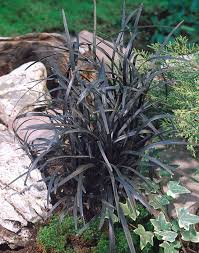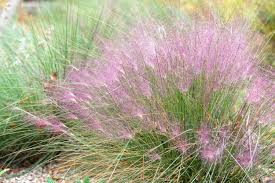Black Grass, scientifically known as Alopecurus myosuroides, is a type of plant that has gained attention due to its unique characteristics and impact on agriculture. This plant, although named “Black Grass,” doesn’t actually have black leaves; instead, its name comes from the dark appearance of its seed heads as they mature.
Black Grass is a weed that commonly infests cereal crops, such as wheat and barley. Despite its small size, it poses a significant threat to agricultural fields. Its rapid growth rate and ability to adapt to various environments make it a challenging weed to control. Farmers and researchers alike have been studying Black Grass to understand its behavior and find effective ways to manage its spread.
The life cycle of Black Grass involves germination, growth, flowering, and seed production. Its seeds can remain dormant in the soil for several years before germinating, which makes its control even more complex. Once the plant matures, it produces long, slender flower heads that contain numerous seeds. These seeds are easily dispersed by wind, machinery, animals, and even humans, contributing to the widespread distribution of the weed.
Farmers have faced difficulties in managing Black Grass due to its ability to develop resistance to herbicides commonly used for weed control. This has led to the exploration of alternative methods to prevent its growth, such as crop rotation, mechanical weeding, and even introducing natural predators to the ecosystem.
To mitigate the impact of Black Grass on crop yields, agricultural experts recommend integrated weed management strategies. These strategies involve combining different control methods to reduce the reliance on a single approach and to create a more sustainable solution. By understanding the life cycle, growth patterns, and reproductive habits of Black Grass, farmers can better tailor their management practices to effectively combat its presence.
In addition, Black Grass, or Alopecurus myosuroides, might not be truly black in color, but its significance in the agricultural landscape is undeniable. As a resilient weed with the potential to negatively affect cereal crops, it serves as a reminder of the challenges farmers face in maintaining productive fields. By studying its behavior and implementing integrated management approaches, we can work towards minimizing the impact of Black Grass and ensuring healthier crop yields for years to come.
Read Also: Feed Lot Fattening of Rams Practice
How to control Black Grass

Here’s a guide on how to control Black Grass (Alopecurus myosuroides) effectively in agricultural settings:
1. Early Detection: Regularly monitor your fields for the presence of Black Grass. Early detection allows you to take action before the weed becomes a widespread problem.
2. Crop Rotation: Implement a crop rotation system where you alternate between different crops in a field. Black Grass has specific preferences, and changing the type of crop can disrupt its growth cycle and reduce its prevalence.
3. Seedbed Preparation: Proper seedbed preparation, such as plowing and harrowing, can help bury Black Grass seeds deeper into the soil. This can reduce their chances of germinating and surfacing.
4. Stubble Management: After harvesting, consider removing crop residues or tilling the stubble to disturb any Black Grass seeds present. This can prevent them from germinating in the next planting season.
5. Delayed Drilling: Delay the sowing of your main crop to allow Black Grass to germinate first. Then, use shallow cultivation to destroy the emerged weeds before planting the main crop.
6. Cultivation: Regular mechanical weeding through cultivation can help disrupt the growth of Black Grass. However, ensure that you don’t bring dormant seeds to the surface during this process.
7. Herbicide Rotation: If using herbicides, rotate between different chemical groups to reduce the likelihood of Black Grass developing resistance. Consult with agronomists to choose effective herbicides and proper application methods.
8. Use of Non-Chemical Methods: Consider using non-chemical methods, such as false seedbed techniques, where you prepare a seedbed but delay sowing to allow weeds to germinate. Then, use shallow cultivation to kill the emerged weeds before planting the crop.
9. Stubble Burning: Controlled burning of crop residues after harvest can destroy weed seeds, including those of Black Grass. However, this method may have environmental considerations and should be used cautiously.
10. Biological Control: Introduce natural predators or parasites of Black Grass to help reduce its population. However, this method requires careful research and assessment to prevent unintended ecological imbalances.
11. Integrated Weed Management (IWM): Combine several control methods into a holistic approach. By using a mix of cultural, mechanical, chemical, and biological methods, you can reduce the reliance on any single method and improve overall weed control.
12. Education and Training: Regularly educate yourself and your farmworkers about Black Grass and effective control measures. Stay updated on the latest research and best practices in weed management.
Remember, managing Black Grass requires a long-term commitment and a proactive approach. By employing a combination of methods and staying vigilant, you can effectively control the spread of this challenging weed and safeguard your crops. Consulting with local agricultural experts or agronomists can provide valuable insights tailored to your specific region and conditions.
Environmental Impact of Black Grass
The presence of Black Grass (Alopecurus myosuroides) in agricultural fields can have several environmental impacts, affecting both the ecosystem and agricultural practices. Here are some key points regarding its environmental impact:
1. Biodiversity: Black Grass is a competitive weed that can outcompete native plants and other desirable crops for resources like water, nutrients, and sunlight. This can reduce plant diversity in the ecosystem and potentially disrupt the balance of native plant species.
2. Soil Health: The growth of Black Grass can lead to soil degradation. Its dense growth and rapid spread can contribute to soil compaction and erosion, diminishing the soil’s structure and fertility over time.
3. Chemical Use: To control Black Grass, farmers often resort to using herbicides. Frequent and excessive herbicide application can have negative effects on the environment, including soil and water pollution, as well as harm to non-target organisms.
4. Herbicide Resistance: Black Grass has shown a tendency to develop resistance to herbicides, which can lead to increased herbicide use. This not only exacerbates chemical pollution but also reduces the effectiveness of weed control measures over time.
5. Economic Impact: The presence of Black Grass can reduce crop yields, leading to financial losses for farmers. In an attempt to mitigate these losses, farmers may resort to practices that have a higher environmental impact, such as increased chemical use.
6. Invasive Behavior: Black Grass can spread rapidly due to its ability to produce large quantities of seeds that are easily dispersed by wind, machinery, and animals. This invasive behavior can disrupt the natural balance of ecosystems and agricultural fields.
7. Water Consumption: Black Grass can consume significant amounts of water, which may affect water availability for other plants and crops in the area. This can be particularly concerning in regions with water scarcity.
8. Wildlife Habitat: The dominance of Black Grass can alter habitats and disrupt food chains, potentially affecting wildlife that relies on native plants for food and shelter.
9. Carbon Footprint: Intensive weed control measures, including mechanized cultivation and increased herbicide application, can contribute to higher greenhouse gas emissions and an increased carbon footprint in agricultural practices.
10. Loss of Ecosystem Services: The decline of native plant species due to Black Grass infestations can lead to a reduction in ecosystem services such as pollination, soil fertility, and natural pest control.
Addressing the environmental impact of Black Grass requires a balanced and integrated approach. Farmers and researchers can collaborate to develop and implement sustainable weed management strategies that minimize the negative consequences on the environment while ensuring productive and resilient agricultural systems. This may involve a combination of cultural practices, biological control methods, responsible chemical use, and ongoing monitoring of the ecosystem.
Read Also: The Systems of Sheep Production
Pink Grass

Pink Grass is a special kind of grass that grows in a beautiful pink color. It looks different from regular green grass that we usually see. Pink Grass is like a gentle surprise in nature’s garden. When you see it, you might think you’re in a magical world. People like to take pictures of Pink Grass because it’s so unique and pretty.
This kind of grass doesn’t grow everywhere. It’s found in a few places around the world. It needs just the right conditions to grow pink. Sometimes, Pink Grass grows in big fields, and other times, you might find it in small patches. It’s like nature’s own pink carpet!
Just like green grass, Pink Grass also needs water, sunlight, and good soil to grow. But somehow, it turns pink instead of green. Scientists say it’s because of something special inside the grass that makes it pink. People who study plants are still trying to understand all the reasons behind this pretty pink color.
Whenever you go out for tour or siting, keep an eye out for Pink Grass. It’s a lovely reminder of how amazing and surprising our world can be. Remember, not everything has to be green to be grass – sometimes, it can be pink and bring a smile to your face.
Read Also: Recycling Tips: Easy Ways to Help the Environment
